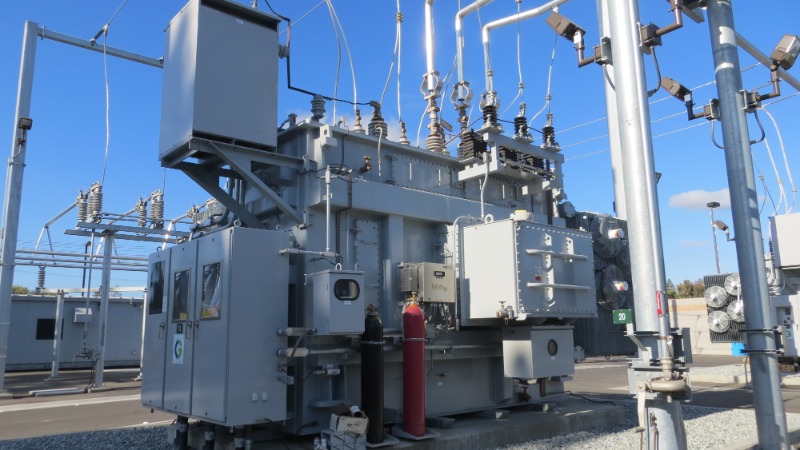Insights
Feeding the Planet in an Uncertain Future
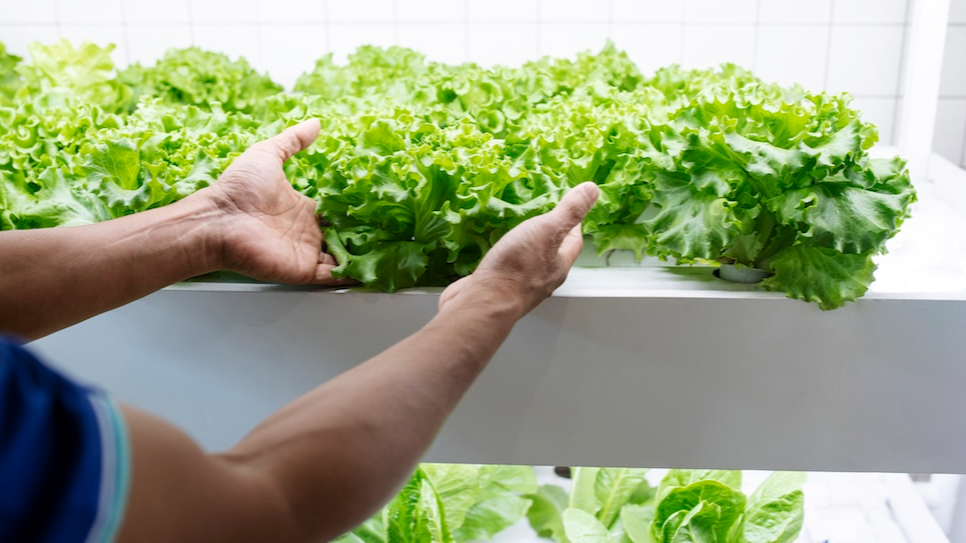
Why is food a problem?
For most of us, at least in the western hemisphere, food has never been a problem. It has always been readily available on demand, and we’ve never had to worry about our country’s ability to feed us. And yet in 2022, there were still 390 million underfed adults, and over 190 million underfed children worldwide.
While this number has been steadily decreasing for the past century, nothing guarantees that the trend will continue. As the world population grows to 9.1 Billion in 2050 (according to recent UN estimates), we will need to raise food production by 35% to match the demand.
Traditionally, raising food production has been achieved through two means: increasing crop efficiency and increasing land use. While the latter is easier, it comes with a host of challenges that cannot be overlooked. Agriculture already comprises over half of all habitable land, and while this leaves ample room for development, remaining space is often located in remote areas, far from the communities that need it. Additionally, cultivating more land also means using more resources, such as water, which are often in short supply, and taking away more land from wildlife, further accelerating global diversity loss.

To add fuel to the fire, most of the techniques we’ve developed to reach current crop efficiencies are self-destructive, because of their impact on their own environment. Modern agriculture dries up rivers, decimates native species, dumps pollutants in our water and spreads toxic chemicals in the air. The intensive use of soil further reduces the amount of nutrients and therefore the fertility of the land, which can have a catastrophic impact on production. To increase crop yields while making agriculture sustainable in the long run, we need innovative tech. Lucky for us, we’re a very creative species, and for the past quarter century, we’ve been inventing all sorts of ways to grow food, under the label of “Sustainable Agriculture”.
What is sustainable agriculture?
Sustainable agriculture is fundamentally about making more with less: less land, less resources, less impact on the environment. Its sole concern is not to create more food for the world now, but to create more food for the world forever, by using techniques that can be maintained for millennia without degrading their surroundings.
It seeks to apply the fundamental principles of sustainable development to agriculture, ensuring the production of food, wood and fibers while respecting the ecological, economic and social limits that ensure the durability of this production. It relies on the following key principles:
Develop efficient, self-sufficient and economical production systems that provide decent incomes
Preserve and protect biodiversity and territories
Optimize the use of natural resources
Manage the quality of air, water and soil
Increase energy efficiency in food production and distribution
This all sounds nice and well, but how do we implement these ideas concretely? Let’s take a look at three fundamental ways we can make agriculture greener.
Making Traditional Farming More Efficient
Using less pesticides and fertilisers
The first intuitive way to make agriculture more sustainable is to modify traditional agricultural practices to make them more resource efficient. Why do we spray tons of pesticides and fertilizers over our land, if only a small fraction will reach the ground and actually benefit the plants? Well because it’s easy and it doesn't really matter where the leftovers go, we can just buy some more. But when resources are scarce and pesticides are dangerous for our health, we need to find something else.
Precision Agriculture allows farmers to spray exactly the right amount at exactly the right place for maximum efficiency and minimum pollution. This can be done with small agile robots, such as the Smartomizer, or with huge machines that know every inch and every plant of the space they monitor, such as ARA. This utra-high precision field sprayer can reduce the amount of pesticides needed to protect a field by over 80%, and it was featured as one of the 1000 Solar Impulse Solutions.
Furthermore, we can fight soil impoverishment by using natural boosters that regenerate nutrients and trap carbon and water into the soil. For example, French company Gaiago developed Nutrigeo, a formula to revitalize the fungus already present in soil. This fungus, once awakened, can provide 15% of the nutrients the plant needs, reducing the need for synthetic fertilisers by the same amount.
Using less water
Just as with the pesticides, why spray water everywhere, most of it evaporating immediately, if you can give water directly to the plant. That’s what smart irrigation systems do: they are able to detect humidity levels, calculate the right amount of water to give to a plant, and deposit it directly at the plant’s roots with an extensive tube system. By developing such systems, companies like AQUA4D or Hortau are able to increase water efficiency by up to 92%, and crop yields by nearly 100%.
Gathering data
With the rise of new technologies we can amass huge amounts of data through the use of on-the-ground sensors, drones and satellites. These tools can give precious knowledge about the land farmers are using, as well as how well their crops are doing. When combined with predictive analysis and AI, this technology can greatly improve crop yield. Systems like Farm Monitoring 2.0 have successfully implemented this design and reduced the environmental impact of the farms they monitor by up to 70%.
We can also use data to increase efficiency not within the field itself but by making sure we take full advantage of what the field produces. After it’s been produced, AI tools can track the product, estimate its end date, and help farmers and consumers use it as best as they can, effectively limiting waste and making agriculture more efficient. This is the principle behind one of our solutions: AgriTrack, a post-harvest optimising tool combining data collection and AI to reduce waste along perishable food value chains.
Bringing farming to new dimensions
A second way to make agriculture more sustainable is to find new places to cultivate, completely discarding the traditional farming methods.
One example of this is the ever-expanding field of agrivoltaics. Agrivoltaics is the practice of putting both crop plantations and solar panels in the same field, making the land use more efficient. But why would we do that? Well, for solar to actually have a large impact on our global emissions, we need a lot of it, and that takes valuable space. Indeed the land needed for solar panel fields has roughly the same characteristics as the land needed for crop fields: flat, accessible and well oriented. To reduce conflicts, entrepreneurs have found solutions to incorporate both in the same space. This benefits both the crops, which are partially shaded from the harsh sunlight that could damage them in the middle of the day, and the panels, which enjoy the extra revenue created by the crops. Some of our labelled partners have found creative solutions to further this symbiosis: AgriEnergie is developing such projects all over the world, while PanePowerSW invented a transparent solar panel that generates electricity without disturbing the plants below.
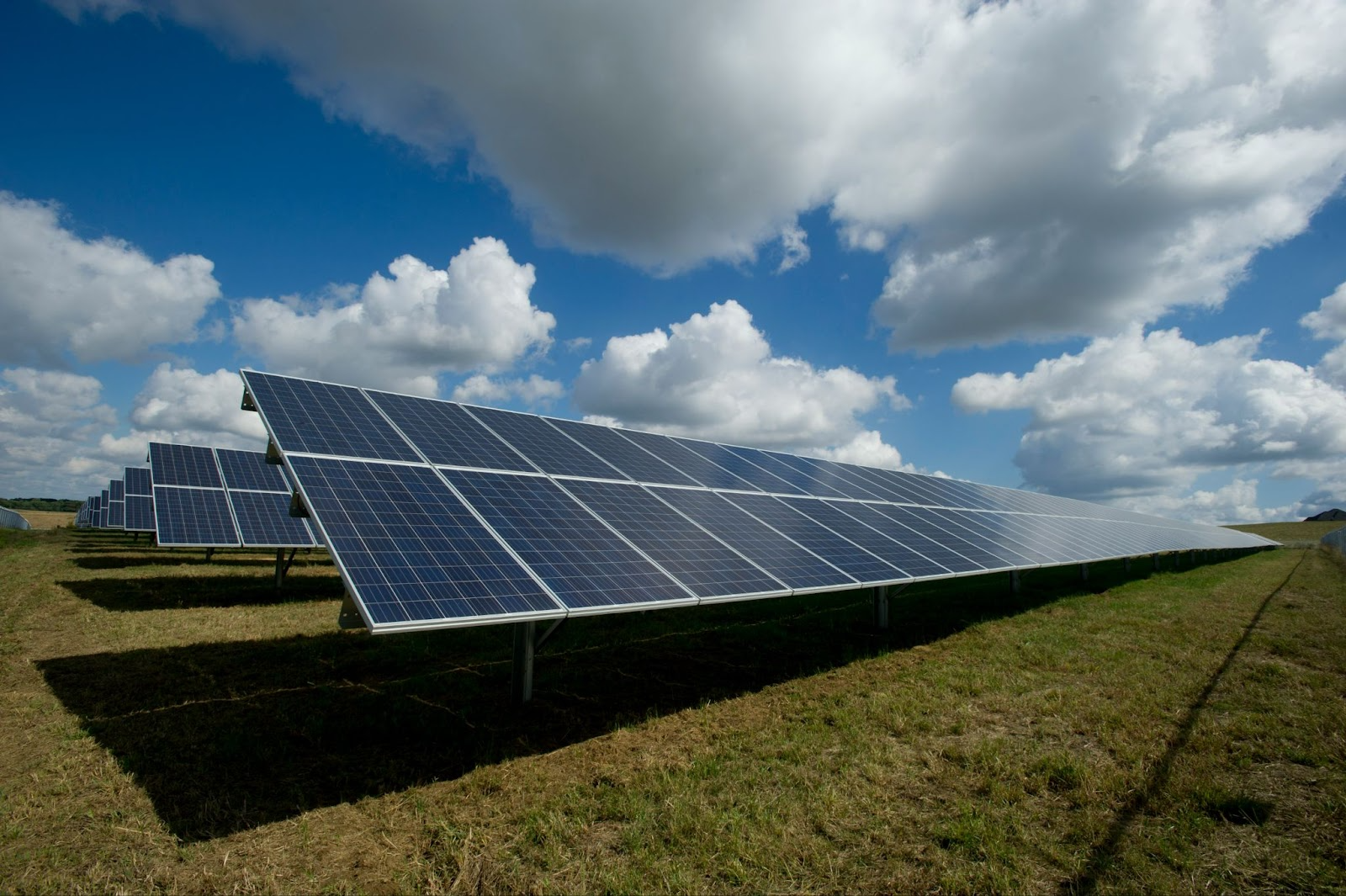
Finally, agriculture can be brought directly inside cities with urban farming! By cultivating small plots of land on rooftops and in parks, urban farming creates fresh local produce for city dwellers. As well as bringing cleaner air to city centers, urban farming also helps with mental health issues, and can provide a great escape for urban employees. However, urban farming installations are limited in production, in both diversity and amount of crops. The team at Saffron Urban Farming have transformed a once unsustainable production of Saffron imported all the way from Iran into a sustainable production simply by getting the Saffron to grow directly in the cities where it is consumed.
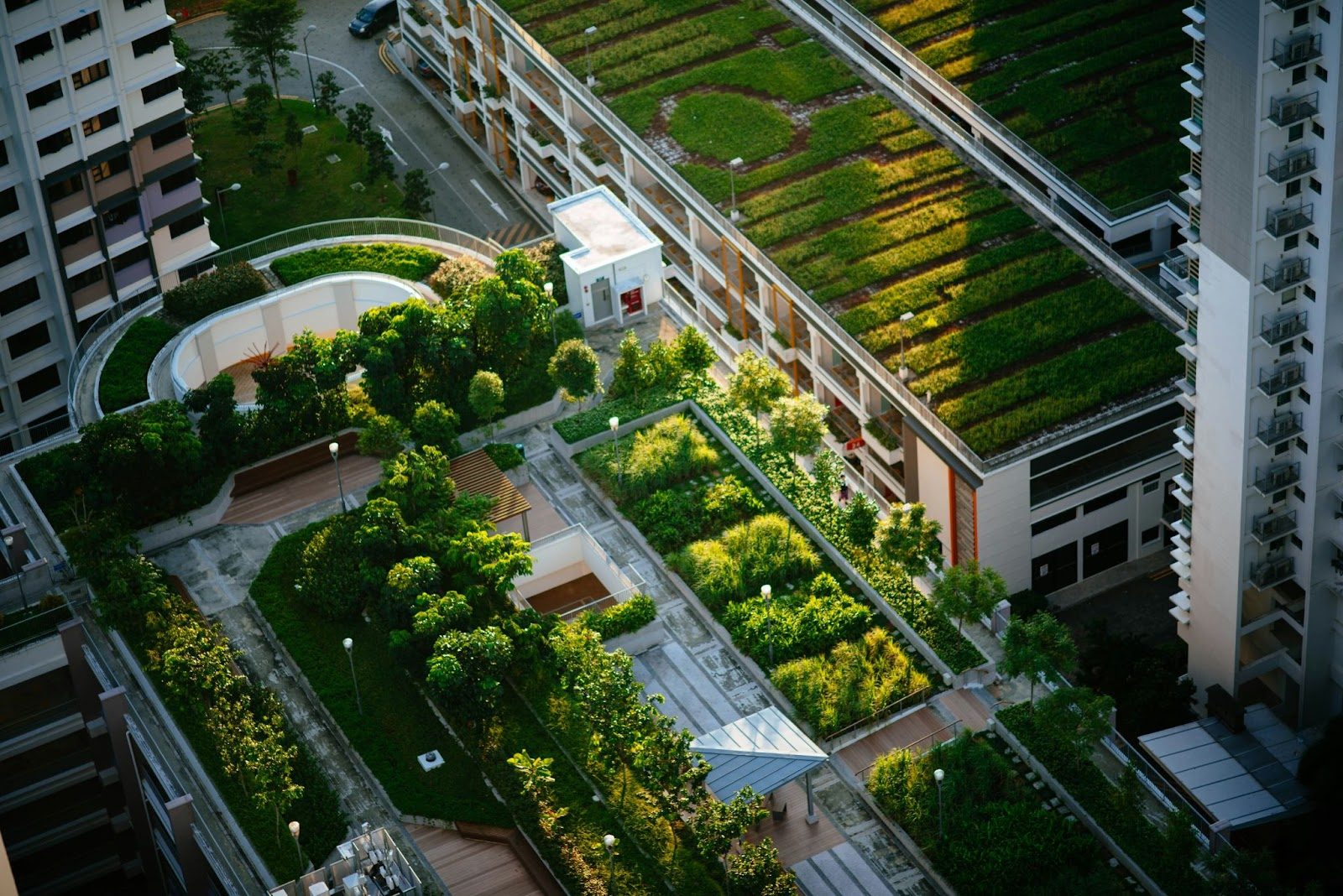
As with many other sectors, it will be very difficult to achieve global sustainability if we maintain our consumption of agricultural products. One of the most resource-intensive components of our diet is meat: it’s land intensive, very energy inefficient, and extremely polluting. Today, livestock uses more than 80% of the land dedicated to agriculture (taking into account land used for grazing, and for crops cultivated for animal feed). But we need animal meat because it is our main source of protein. Proteins are large molecules that are essential for our body and that we mostly import from our food, and they are densely present in meat but only trace amounts can be found in the rest of our food. To move away from meat, we therefore need to find alternative sources of protein, which are more energy efficient and with high-enough concentrations.
One of these possible sources is insect farming. Insects are a great source of protein, and they are incredibly easy to raise in large numbers. They can be fed with upcycled organic waste or pretty much anything. To put it simply, insects emit less than 1% of the CO2 emitted by cow meat for the same amount of protein, all while requiring up to 90% less land. Once the insects are fully grown, they can be fed to other large animals, to reduce the impact of meat production, or grinded down into powder for human consumption. Companies like Entomo, InsectiPro, YnMeal, La compagnie des Insectes or InnovaFeed are already deploying this idea at scale, and sustainably produce anything from animal feed to cake batter, all from insects such as ants or worms.
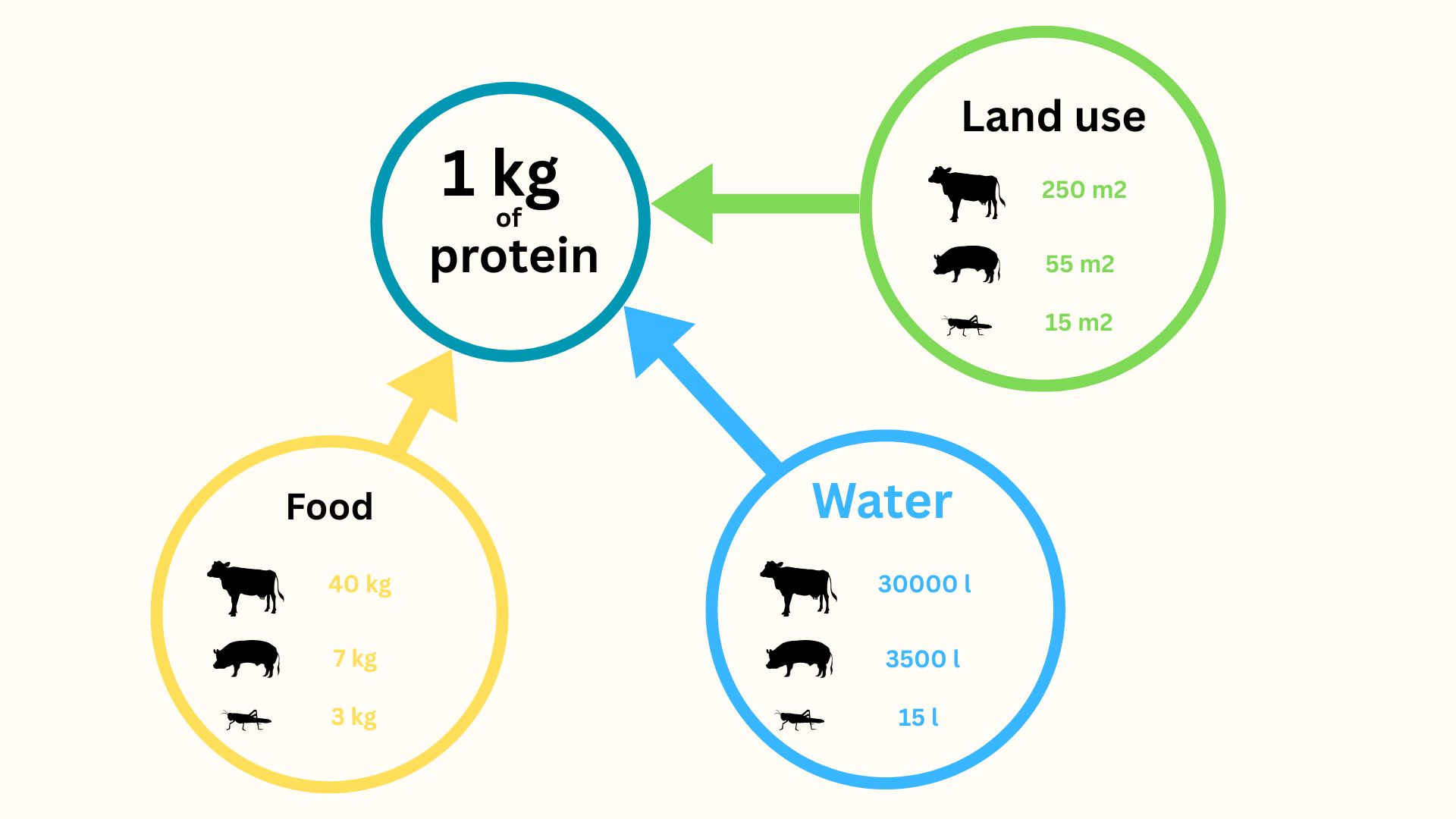
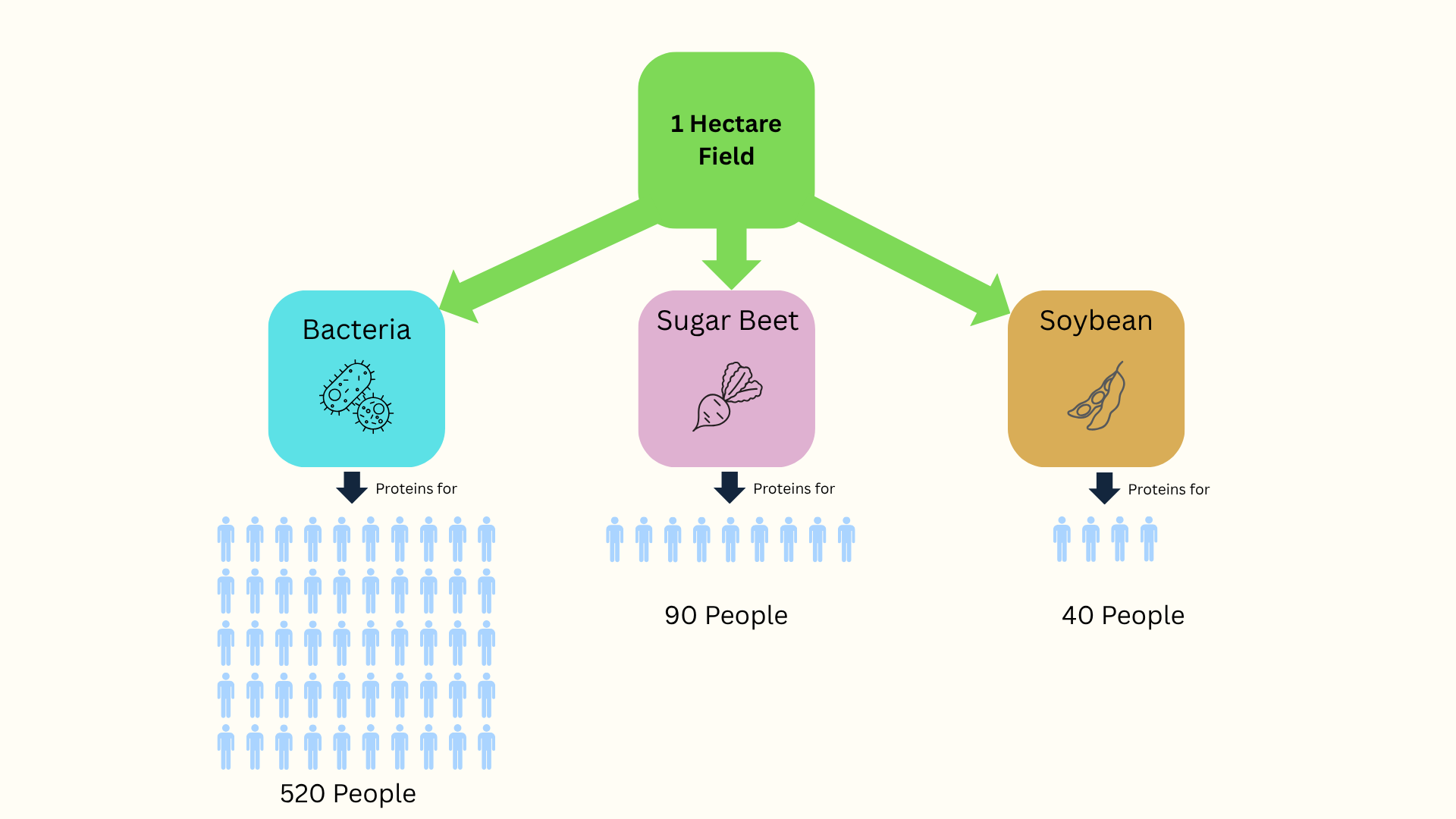 Comparison of land use for different sources of protein
Comparison of land use for different sources of protein

Towards a sustainable and resilient food system
Making agriculture sustainable and food accessible to all is one of the major goals of this century. Luckily there is a diverse panel of technologies and innovations that can help us do so. With these methods we can produce more, better, and for less. Whilst none of them is a magical remedy that will solve our problems by itself, developing a combination of them all in the coming decades will lead to a healthy and food-safe future for all.
Resources:
https://www.fao.org/fileadmin/templates/wsfs/docs/Issues_papers/HLEF2050_Global_Agriculture.pdf
https://www.who.int/news-room/fact-sheets/detail/malnutrition
https://www.who.int/news-room/fact-sheets/detail/malnutrition
https://www.energy.gov/eere/solar/agrivoltaics-solar-and-agriculture-co-location
https://www.agroscope.admin.ch/agroscope/en/home/news/dossiers/agri-pv.html
https://www.energy.gov/eere/solar/agrivoltaics-solar-and-agriculture-co-location


